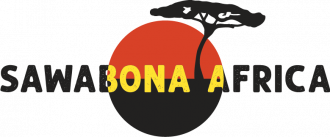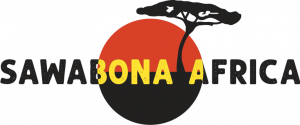School education in Germany and South Africa
Listicle
January 2024
A comparison of education systems.
Munich, 11 January 2024 – The education systems in South Africa and Germany are as different as the children themselves. The two countries differ significantly when it comes to starting school or the type of school. But what about the level of education or home schooling? Sawabona Africa makes a comparison.
In Germany, people like to complain about the lack of education. It is true that the Scandinavians have been at the forefront of digital learning for years – teaching with PCs, tablets and interactive apps. But the international perspective makes it clear that, despite the recent Pisa debacle, the local school system is not in such a bad position. The non-profit organisation Sawabona Africa, which campaigns for better education in South Africa, highlights the differences and similarities between the two countries.
- Start of school. As in all countries in the southern hemisphere, the school year begins in January and ends in December. Specifically, South African children start in mid-January and finish in the first week of December. The winter holidays are in July and August. In Germany, school starts are staggered: in 2024, Thuringia will be the first German state to start school on 1 August, with Bavaria and Baden-Württemberg bringing up the rear in mid-September.
- In South Africa, children between the ages of five and six can attend pre-school. The government plans to make this grade R (or 0) compulsory in the future. The serious side of life then begins with primary school, which, unlike in Germany, runs from Grade 1 to Grade 7. Secondary school, from Year 8 to Year 12 (Year 13 in some private institutions), is known as high school. In Germany, after primary school, which usually ends with Year 4, children can attend a secondary school called a Hauptschule or Gesamtschule, a Realschule or Gymnasium, depending on the federal state. The final choice of school depends on the child’s current level of learning.
- Level of education. At the turn of the year there was a huge uproar: German pupils performed worse than ever before in the Pisa study. In reading, maths and science, the country’s schools achieved the lowest scores ever measured for Germany by the Organisation for Economic Cooperation and Development (OECD). Nevertheless, the level of education in Germany is very high by international standards: In South Africa, poor facilities in many schools, poverty and a lack of support at home mean that every second child leaves school without a certificate. According to the PIRLS report, four out of five fourth graders are unable to read and comprehend a text. According to the latest TIMSS ranking, many students lack even basic knowledge in mathematics and science.
- Compulsory schooling. In South Africa, schooling is compulsory from the age of seven (Grade 1) to the age of 15 (Grade 9). However, compulsory education is not enforced and the government is considering penalising parents for non-compliance. In Germany, compulsory schooling begins in the following school year for all children who have reached the age of six on the reference date of a given year. Compulsory schooling lasts nine or ten years, depending on the federal state, including the repetition of one grade. A breach of compulsory school attendance is considered a misdemeanour and is punishable by a fine. In some federal states, such as Hamburg, Hesse or Saarland, parents can be prosecuted with a prison sentence of up to six months.
- Homeschooling is allowed in South Africa. Parents register their children for exams at a school. In Germany, on the other hand, apart from distance learning during the Corona period, homeschooling in the sense of permanent schooling by parents is not permitted. There are frequent legal disputes, but exemption is only possible in strictly regulated special cases, such as illness.
- Single-sex schools. Schools for boys or girls only are common in many parts of South Africa. In the 1960s and 1970s, coeducation became the norm, with a few exceptions. Coeducation was intended to improve equal opportunities. In recent years, this approach has been increasingly questioned – with the argument that boys are pushing girls into the background, especially in maths and science. Although experts disagree on this point, there are still schools that separate certain subjects by gender.
- School Uniform. Wearing a school uniform is compulsory in all public schools in South Africa. The dress code is set by the institutions themselves – for example, a combination of white shirt, vest, knee-length skirt and black shoes is required for girls. Boys, on the other hand, often wear long grey trousers in winter and short grey trousers in summer, as well as a white shirt, tie, waistcoat, black shoes and blazer. In Germany, school uniforms are a recurring topic of discussion. However, the Association for Education and Training (VBE) sees uniforms as an encroachment on parents’ and children’s right to self-determination. In addition, school uniforms would not prevent social exclusion and would place an unnecessary burden on financially weak households.
- Getting to school. Although parents in this country complain, students in South Africa generally have a much harder time getting to school. There are few privately funded school buses and public transport is unreliable. In poorer areas in particular, there is no transport, meaning that children have to walk an hour or more to get to school. In Germany, guidelines such as the School Transport Ordinance (SchBefV) apply: As a rule, a distance of one kilometre to school is considered reasonable for first graders. Otherwise, transport is compulsory, even if the route is particularly dangerous or the child’s health is impaired. According to a recent ADAC study, half of German schoolchildren almost always walk to school, or at least to the bus stop. A quarter use the school bus and one in five use the public bus. Depending on the weather, this is followed by cycling or parental taxis.
- School meals. With the increase in all-day schooling in Germany, more and more children are eating lunch at school. Canteen meals do not have the best reputation, even though many school authorities set high quality standards, for example by demanding regional products in organic quality. Children in South Africa can only dream of this: schools in low-income areas offer special meal programmes. However, the combination of a peanut butter sandwich and oros (concentrated orange syrup mixed with water) is not a prime example of a healthy eating and is still the only meal of the day for many children.
“The education system in South Africa is facing major problems. Parents who can afford it send their children to public schools. These offer a much higher level of education than most state institutions. But this also means that the children’s future is linked to the wealth of their parents,” explains Zilla Stekhoven, founder of Sawabona Africa. Trained as a lawyer in South Africa, Stekhoven worked internationally in many fields before founding Sawabona Africa in 2021. “The children still enjoy going to school. They have high hopes of eventually getting a well-paid job. Enormous efforts are needed to really improve the standard of education in South Africa. The financial requirements – whether from the government or private donations – are also enormous.”
Sawabona Africa:
info@sawabona-africa.com
PR-COM GmbH
Natalie Burkhart
Sendlinger-Tor-Platz 6
80336 München
Tel.: 089/59997-804

